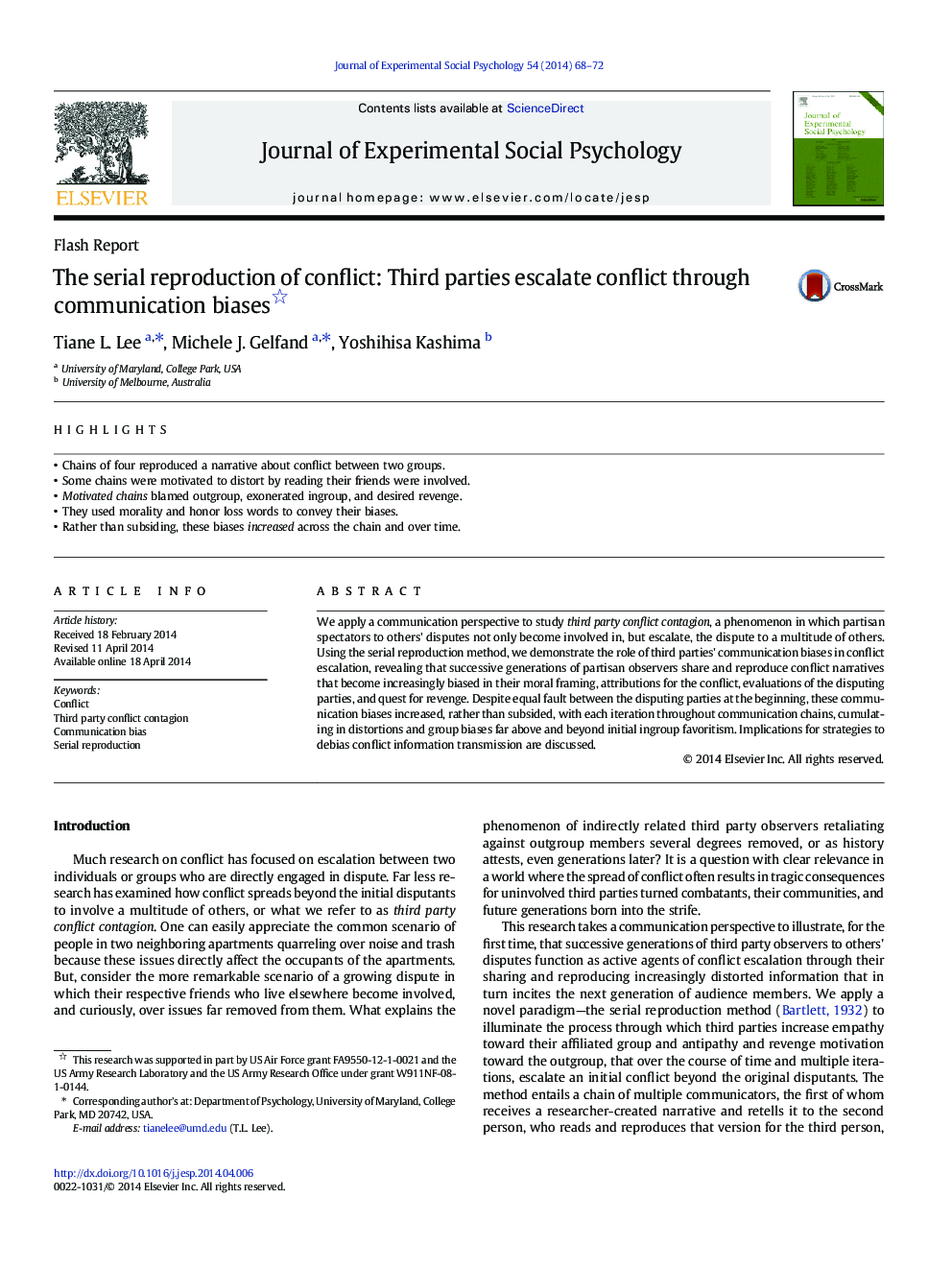| Article ID | Journal | Published Year | Pages | File Type |
|---|---|---|---|---|
| 947817 | Journal of Experimental Social Psychology | 2014 | 5 Pages |
•Chains of four reproduced a narrative about conflict between two groups.•Some chains were motivated to distort by reading their friends were involved.•Motivated chains blamed outgroup, exonerated ingroup, and desired revenge.•They used morality and honor loss words to convey their biases.•Rather than subsiding, these biases increased across the chain and over time.
We apply a communication perspective to study third party conflict contagion, a phenomenon in which partisan spectators to others' disputes not only become involved in, but escalate, the dispute to a multitude of others. Using the serial reproduction method, we demonstrate the role of third parties' communication biases in conflict escalation, revealing that successive generations of partisan observers share and reproduce conflict narratives that become increasingly biased in their moral framing, attributions for the conflict, evaluations of the disputing parties, and quest for revenge. Despite equal fault between the disputing parties at the beginning, these communication biases increased, rather than subsided, with each iteration throughout communication chains, cumulating in distortions and group biases far above and beyond initial ingroup favoritism. Implications for strategies to debias conflict information transmission are discussed.
